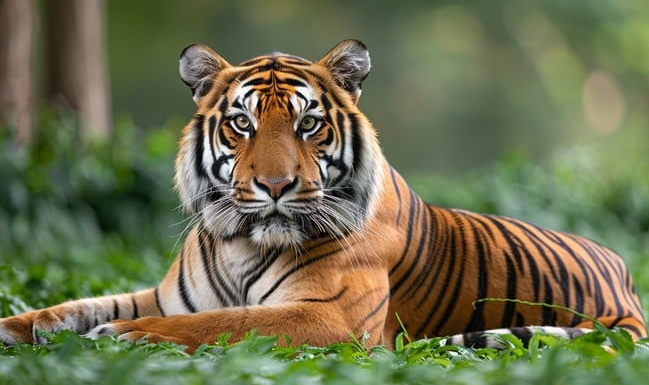The Bengal tiger is one of the most iconic and majestic animals on the planet, representing strength and beauty in the wild. Unfortunately, this magnificent creature faces numerous threats to its survival, making awareness and preservation efforts more crucial than ever. In this article, we will explore the unique characteristics of the Bengal tiger, its habitat and behavior, and the ongoing conservation efforts to protect this incredible species.
Understanding the Bengal Tiger’s Characteristics
The Bengal tiger, scientifically known as Panthera tigris tigris, is distinguished by its striking orange coat with black stripes, unique to each tiger just like fingerprints in humans. Adult males weigh between 400 to 500 pounds and can reach up to 10 feet in length, including their tail. These big cats boast powerful limbs and sharp retractable claws, making them excellent hunters. Their keen eyesight and acute hearing enable them to stalk their prey effectively, primarily consisting of deer and wild boar. With an average lifespan of 15 years in the wild, the Bengal tiger is not only a breathtaking sight but also a marvel of evolution.
Habitat and Behavior of Bengal Tigers
Bengal tigers primarily inhabit the lush forests of India, although they can also be found in smaller numbers in Bangladesh, Nepal, and Bhutan. These tigers prefer habitats that provide adequate cover for stalking prey, including dense forests, mangroves, and grasslands. Known for their solitary nature, Bengal tigers typically establish vast territories ranging from 20 to 50 square miles. During twilight and nighttime, they are most active due to their crepuscular hunting behavior. They are excellent swimmers and often take to water to cool off or to pursue prey. Understanding their behavior is essential for conservationists working to ensure their survival in an increasingly fragmented habitat.
Conservation Efforts to Protect the Bengal Tiger
The Bengal tiger’s population has dramatically declined over the years, mainly due to habitat loss, poaching, and human-wildlife conflicts. However, concerted conservation efforts have been put in place to protect this majestic creature. Initiatives such as Project Tiger in India aim to create and maintain protected reserves, promoting breeding programs to boost the dwindling population. Community awareness programs educate local populations on the importance of preserving their natural environment. Thanks to these efforts, there has been a gradual increase in Bengal tiger populations in certain areas, though challenges remain. Supporting conservation organizations and spreading awareness can significantly contribute to the survival of these magnificent animals.
In conclusion, the majestic Bengal tiger captures the imagination and hearts of many, representing the beauty of wildlife. Understanding their characteristics, habitat, and the ongoing conservation efforts is vital for ensuring their continued existence. If you’re interested in learning more or contributing to conservation efforts, consider visiting a national park, supporting wildlife protection initiatives, or simply spreading the word about these incredible creatures. Together, we can help ensure that future generations will also admire the majestic Bengal tiger in the wild.

